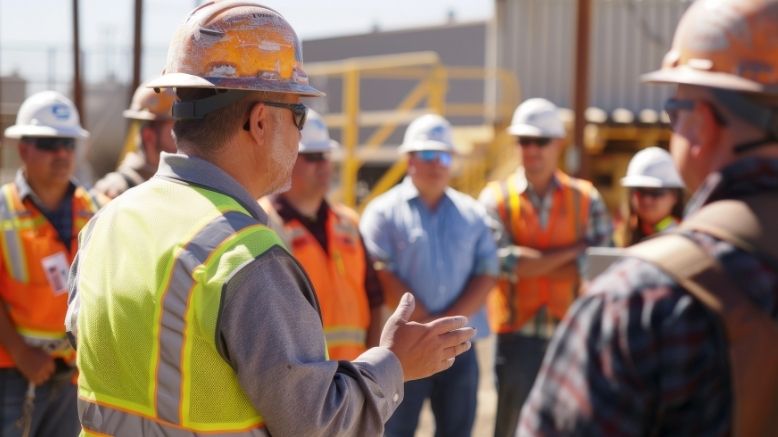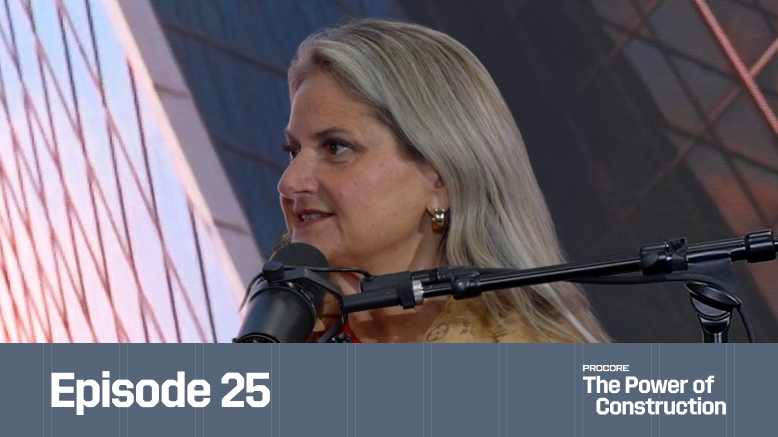— 7 min read
Kaizen in Construction: Implementing a Continuous Improvement Mindset


Last Updated Sep 16, 2025

Charlie Dunn
Manager of Lean
Charlie tells a good story. From lightning fast development on the Las Vegas strip, to oil fueled expansion in Edmonton, Alberta, to once in a generation energy plant upgrades throughout the Southeast, to global mission critical and life science construction for enterprise owners, he thrives in the challenging delivery gap between “as is” conditions and the “to be” designed state. His career highlights include the on-site project management of over 2.5 million square feet of new distribution space across North America with zero recordable injuries, and WANO (World Association of Nuclear Operators) recognition for the use of 4D technology in project delivery. He knows that projects succeed because of people—what they believe, strategy—as it supports creativity and innovation, and tools—to deliver value, drive out waste, and improve safety. Charlie is currently the Manager of Lean Construction at Mortenson Construction.

Kacie Goff
Contributing Writer
91 articles
Kacie Goff is a construction writer who grew up in a construction family — her dad owned a concrete company. Over the last decade, she’s blended that experience with her writing expertise to create content for the Construction Progress Coalition, Newsweek, CNET, and others. She founded and runs her own agency, Jot Content, from her home in Ventura, California.
Last Updated Sep 16, 2025

Most people want to get better at doing the things they need to do on a regular basis. For a business, continuous improvement gets particularly powerful. It can boost productivity and expand profit margins. It can align teams and help the company best serve its customers.
Regularly getting better has been captured in a Japanese business philosophy called Kaizen, a core principle of the Lean Construction method.
Designed as a systematic management methodology, Kaizen centers on making small improvements over time. The goals driving this continuous improvement are widespread: refining processes, identifying and eliminating bottlenecks, making work more fulfilling for employees and more.
Kaizen, then, seems to hold promise for construction companies that want to win more contracts, then perform the work with higher margins and happier teams. However, actually deploying continuous improvement in construction — both in the office and in the field — is a different story.
Table of contents
Challenges in Applying Lean Principles to Construction
The continuous improvement of Kaizen means looking at existing processes to identify where improvements can be made.
Any seasoned construction professional will report, though, that every project is different. Processes aren’t necessarily repeatable in the same way they might be in, say, a corporate or manufacturing environment. That makes refinement more challenging.
The dilemma we have in construction is that our work often does not exist yet. In a manufacturing environment, the work happens on an assembly line through a process that's there all day, every day. You can go and watch it, study it and see where your bottleneck, constraints and improvement opportunities are.
For construction, it may be there just in a fleeting moment. In that fleeting moment, we either get it right or we get it wrong. Then, we create rework, which adds accounting for labor: Over 30% for material, over 30% for cost, depending on the project type. It's a staggering amount of rework because of this dilemma where we don't have this chance to see and to study the work.

Charlie Dunn
Manager of Lean
Mortenson Construction
In some ways, technology has compounded this problem. Tech tools — particularly reality capture options — have promised to make things more visible.
In practice, though, there’s often latency between when things happen on the jobsite and when the work gets captured and reported. When the gap between the work and the reporting is too big, it makes it even harder to understand, let alone analyze, processes.
As a result, some construction professionals feel let down by lean practices, and particularly by Kaizen. The trouble might stem from the fact that continuous improvement seems like it should be widely deployed. However, narrowing the focus may help construction pros yield more from this practice.
Getting Granular To Drive Continuous Improvement
A key concept in Kaizen is looking at the actual detailed work. Zooming in and looking more closely can help construction teams identify steps that actually are repeatable — and, then, refinable.
A small batch can change your life. You simply learn to get the batch size right and understand the problem at a smaller level. It enables so much.
Charlie Dunn
Manager of Lean
Mortenson Construction
While every project has unique requirements, there are absolutely workflows that teams repeat time and time again. Taking a more granular focus on those individual steps helps teams identify where work is repeatable. Applying Kaizen in those areas then makes it possible to drive wins.
What’s more, zooming in to find repeatable work, then continuously improving upon it, gives teams a way to capture the knowledge of their experienced builders. When they focus on setting a standard for repeatable work, then iterating on it, they create a process for gathering data and insights. That information highlights opportunities for improvement. It also gives even the greenest construction professional a baseline from which to work, built on the institutional knowledge of those who have come before.
Stay updated on what’s happening in construction.
Subscribe to Blueprint, Procore’s free construction newsletter, to get content from industry experts delivered straight to your inbox.

Kaizen Principles to Apply to Repeatable Steps
When construction teams define small, repeatable steps that they can continuously improve, it’s time to apply some specific Kaizen principles to drive that improvement.
One-Piece Flow
With this approach, production is triggered by actual demand. To apply one-piece flow, teams need to set up systems for signaling. Applying one-piece flow to material delivery, for example, they might institute a “pull” signal. That means one trailer of material would arrive at the jobsite once the previous trailer’s load is diminished to a certain percentage. This way, the jobsite always has the materials it needs without multiple trailers of untapped material in the way.
Takt Time
German for beat, “takt” time means finding the right rhythm for work. Takt time gets calculated by dividing the available working time by customer demand. In construction, takt time means finding optimized scheduling for the work that needs to happen, particularly installation. If a customer wants a project completed in one year, teams can apply takt time by dividing that available 52 weeks by the owner-demanded milestones to best optimize the schedule.
Gemba
Gemba loosely translates from Japanese to “the place where things happen.” In Kaizen, it means going to where the work is occurring in order to study it and identify areas for improvement. That means physically spending time on the jobsite or the fabrication shop, for example. Sitting in the office trying to think of areas for refinement won’t be nearly as helpful as studying the work as it happens, where it happens.
Trystorming
As a counter to brainstorming, "trystorming" blends ideation with rapidly acting on what was brainstormed. In short, trystorming encourages teams to go out and try it. This helps people see what will and won’t work faster, shrinking space for personal biases or historical rigors to get in the way. Plus, doing the work helps people understand it better, so trystorming can lay a foundation for meaningful change.
Measurable Standards
Construction teams have historically discarded knowledge after a project is complete. Instead of washing their hands of the job, though, they can use what they learned to implement or improve upon standards for their company. Then, after any project, they have the opportunity to pause and study the work that happened. Was the standard met? If not, why not?
You can't optimize what you don't define.
Being able to define the work at this more granular level means that you can then capture your standard work. Where have you met the standard? Where have you not met the standard? Then, you can learn from it.
Charlie Dunn
Manager of Lean
Mortenson Construction
Putting People at the Center in Kaizen
Empowering people is a core tenet of Kaizen. The thinking goes that the people doing the work are the ones best positioned to identify areas for improvement.
The key here is creating an environment in which people feel encouraged to come forward and suggest improvements and to trystorm them. Since failure often yields learning opportunities, teams deploying Kaizen need to move away from a fear of it. A company culture of psychological safety goes a long way.
What is the value of technology with people and with Kaizen? It's taking people through work so that when they do the work, they have the confidence that they've been here before. It's not going to go perfectly. It never does, but through that planning effort with a clear understanding — being able to gamify and look at options — it gives them the ability to tap into [their expertise].
Look at people in construction. You won't find more creative, more brilliant minds for problem-solving. It's about getting them the information and the problem early enough so that when they get to the work, there's not an unnecessary delay.
Charlie Dunn
Manager of Lean
Mortenson Construction
Putting people at the center helps to solve some of the issues raised by technology, too. When technology delivers a common understanding or helps model situations so they can be troubleshot beforehand, it supports the success of individual team members.
Was this article helpful?
Thank you for your submission.
0%
0%
You voted that this article was . Was this a mistake? If so, change your vote
Scroll less, learn more about construction.
Subscribe to The Blueprint, Procore’s construction newsletter, to get content from industry experts delivered straight to your inbox.
By clicking this button, you agree to our Privacy Notice and Terms of Service.
Thank you!
You’re signed up to receive The Blueprint newsletter from Procore. You can unsubscribe at any time.
Categories:
Written by

Charlie Dunn
Manager of Lean | Mortenson Construction
Charlie tells a good story. From lightning fast development on the Las Vegas strip, to oil fueled expansion in Edmonton, Alberta, to once in a generation energy plant upgrades throughout the Southeast, to global mission critical and life science construction for enterprise owners, he thrives in the challenging delivery gap between “as is” conditions and the “to be” designed state. His career highlights include the on-site project management of over 2.5 million square feet of new distribution space across North America with zero recordable injuries, and WANO (World Association of Nuclear Operators) recognition for the use of 4D technology in project delivery. He knows that projects succeed because of people—what they believe, strategy—as it supports creativity and innovation, and tools—to deliver value, drive out waste, and improve safety. Charlie is currently the Manager of Lean Construction at Mortenson Construction.
View profile
Kacie Goff
Contributing Writer | Procore Technologies
91 articles
Kacie Goff is a construction writer who grew up in a construction family — her dad owned a concrete company. Over the last decade, she’s blended that experience with her writing expertise to create content for the Construction Progress Coalition, Newsweek, CNET, and others. She founded and runs her own agency, Jot Content, from her home in Ventura, California.
View profileExplore more helpful resources

Profit from Predictability: Construction Software as a Business Strategy
For general contractors, managing complex, multi-million-dollar projects, every project phase — from planning and budgeting to on-site execution — is an opportunity to lose time and money. Construction software is...

Defending Against Financial & Legal Risks on Megaprojects
The construction industry has seen marked growth in megaprojects. Some experts classify any project over $500 million as a megaproject, while others argue that the build needs to be $1...

Unlocking Project Intelligence: Moving from Raw Data to Actionable Insights
The construction industry faces a wide range of challenges, from ongoing labor shortages to frequent cost overruns. But some the biggest hurdles all stem from unpredictability. The general contractors (GCs)...

Who is accountable for innovation in construction?
Everyone says construction needs to innovate—but no one agrees on who’s actually responsible for making it happen. Is it the owner? The builders? The tech vendor? Or is innovation everyone’s...
Free Tools
Calculators
Use our calculators to estimate the cost of construction materials for your next project.
Templates
Find a template to help you with your construction project tasks.
Material Price Tracker
Get the latest U.S. retail prices and view historical trends for common building materials.
Glossary
Explore key terms and phrases used in the industry.
